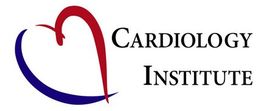Central Auckland, East Auckland, North Auckland, South Auckland, West Auckland > Private Hospitals & Specialists >
Cardiology Institute
Private Service, Cardiology
Today
Description
The Cardiology Institute provides comprehensive private cardiology services in three locations on the North Shore, Greenlane and Howick, Auckland. Our highly trained team of North Shore Hospital-based cardiologists cover all aspects of general and preventive cardiology, multi-modality imaging (imaging the heart with different techniques, ultrasound, CT and MRI), electrophysiology (heart rhythm disorders) and cardiovascular intervention (angioplasty and stenting).
Our group is committed to prompt provision of the following services:
- General cardiology consultations including cardiovascular risk assessment
- Assessment and treatment of high blood pressure, abnormal heart rhythms and palpitations, valvular heart disease (abnormal heart valves) and heart failure.
- Rest and exercise ECGs (exercise treadmills)
- Holter and Event monitoring
- Ambulatory blood pressure recording (for the diagnosis and asessement of hypertension)
- Resting and Stress Echocardiography
- Transoesophageal Echocardiography*
- CT Coronary angiography and coronary calcium score testing*
- Cardiac MRI*
- Coronary angiography and percutaneous coronary intervention (angioplasty and stenting)*
- Renal angiography and stenting*
- Cardioversion*
- Electrophysiology studies (abnormal heart rhythm investigations) and Radio Frequency Ablations (invasive treatment of abnormal rhythms)*
- Pacemaker implantation*.
All procedures are done in our custom-fitted rooms, except those in asterisks.
Meet our team here.
What is Cardiology?
Cardiology is the specialty within medicine that looks at the heart and blood vessels. Your heart consists of four chambers, which are responsible for pumping blood to your lungs and then the rest of your body. The study of the heart includes the heart muscle (the myocardium), the valves within the heart between the chambers, the blood vessels that supply blood (and hence oxygen and nutrients) to the heart muscle, and the electrical system of the heart which is what controls the heart rate.
Consultants
-

Dr Seif El-Jack
Interventional Cardiologist
-

Dr Shawn Foo
Cardiologist
-

Dr James Fu
Cardiologist
-

Dr Andrew Gavin
Electrophysiologist/Cardiologist
-

Dr Ali Khan
Interventional Cardiologist
-

Dr David Kim
Diabetes, Endocrinology & Internal Medicine Specialist
-

Dr Gary Lau
Cardiologist
-

Dr Andrew To
Multimodality Imaging Cardiologist
-

Dr Denise van der Linde
Imaging Cardiologist
-

Dr Bernard Wong
Cardiologist
Referral Expectations
We currently provide same day urgent appointments.
Your GP will refer you to us if they are concerned about your heart and want a specialist opinion.
You may be sent a questionnaire prior to your clinic visit to assist us with making a diagnosis and determining if any tests need to be done prior to you seeing a specialist.
Please bring along copies of previous reports from your doctor, any other specialist or hospital discharge records if you have any, and also a list of your current medications.
Fees and Charges Description
Cardiology Institute are Southern Cross Affiliated Providers for the full range of procedures under the Cardiology (Heart disorder diagnosis & treatment) service.
Hours
| Mon – Fri | 8:30 AM – 5:30 PM |
|---|
After Hours with Prior Arrangement
Procedures / Treatments
You may be asked to have blood tests before coming to clinic, often to check your cholesterol level and screen for diabetes. These blood tests are best done "fasting", i.e. you have bloods taken in the morning on an empty stomach before breakfast.
You may be asked to have blood tests before coming to clinic, often to check your cholesterol level and screen for diabetes. These blood tests are best done "fasting", i.e. you have bloods taken in the morning on an empty stomach before breakfast.
Coronary artery disease refers to the narrowing of arteries that supply blood to heart muscle. The heart, like all other organs in the body, needs a constant supply of oxygen, nutrients and energy. Narrowed arteries limit blood supply to heart muscle such that demand is not met. This can damage the heart muscle. The most common symptom of this problem is chest pain that occurs during exertion (angina). Typical angina chest pain is a heavy sensation in your chest associated with shortness of breath. It may shoot down your arms and can make you feel sick, dizzy or sweaty. Every individual experiences angina differently and any of the above symptoms may represent angina. If your GP thinks you may have angina they will refer you for an assessment to plan treatment. Heart Attack (Myocardial Infarction) If an angina attack is prolonged (e.g. lasts for more than 20 minutes), or if the pain comes on at rest, you may be having a heart attack. This is when a part of the heart muscle becomes so deprived of oxygen that results in permanent damage to your heart and in some cases death. Effective treatments available in hospital to limit the amount of damage, and therefore save lives. If you have chest pain at rest or angina like symptoms for more than 20 minutes, you should call an ambulance and go to hospital as soon as possible. Am I likely to have coronary artery disease? Several risk factors have been scientifically proven to be associated with coronary artery disease. However even if you don’t have any of the following it could still happen to you. You are more likely to have cardiovascular disease if you have any of the following: Are or have been a smoker Diabetes High blood pressure High cholesterol A family history of the disease Are older (your risk increases as you get older) Treatment of coronary artery disease These consists of medications to protect the heart and its blood vessels. These include aspirin which makes the blood less sticky and prone to clots, medication to lower your cholesterol (even if it isn’t very high, it is still helpful), medication to make your heart go slower and to open the blood vessels. You will be given a nitro lingual spray to carry with you with instructions of what to do if you have angina. You will be given advice on diet changes that can protect the heart as well as stop smoking programs. If you have had a heart attack you will be offered cardiac rehabilitation classes with a trained physiotherapist. Depending on test results, these narrowed blood vessels may be opened by stenting performed at the time of the invasive angiography, or may be bypassed by surgical procedure, called coronary artery bypass surgery. Click here for more information.
Coronary artery disease refers to the narrowing of arteries that supply blood to heart muscle. The heart, like all other organs in the body, needs a constant supply of oxygen, nutrients and energy. Narrowed arteries limit blood supply to heart muscle such that demand is not met. This can damage the heart muscle. The most common symptom of this problem is chest pain that occurs during exertion (angina). Typical angina chest pain is a heavy sensation in your chest associated with shortness of breath. It may shoot down your arms and can make you feel sick, dizzy or sweaty. Every individual experiences angina differently and any of the above symptoms may represent angina. If your GP thinks you may have angina they will refer you for an assessment to plan treatment. Heart Attack (Myocardial Infarction) If an angina attack is prolonged (e.g. lasts for more than 20 minutes), or if the pain comes on at rest, you may be having a heart attack. This is when a part of the heart muscle becomes so deprived of oxygen that results in permanent damage to your heart and in some cases death. Effective treatments available in hospital to limit the amount of damage, and therefore save lives. If you have chest pain at rest or angina like symptoms for more than 20 minutes, you should call an ambulance and go to hospital as soon as possible. Am I likely to have coronary artery disease? Several risk factors have been scientifically proven to be associated with coronary artery disease. However even if you don’t have any of the following it could still happen to you. You are more likely to have cardiovascular disease if you have any of the following: Are or have been a smoker Diabetes High blood pressure High cholesterol A family history of the disease Are older (your risk increases as you get older) Treatment of coronary artery disease These consists of medications to protect the heart and its blood vessels. These include aspirin which makes the blood less sticky and prone to clots, medication to lower your cholesterol (even if it isn’t very high, it is still helpful), medication to make your heart go slower and to open the blood vessels. You will be given a nitro lingual spray to carry with you with instructions of what to do if you have angina. You will be given advice on diet changes that can protect the heart as well as stop smoking programs. If you have had a heart attack you will be offered cardiac rehabilitation classes with a trained physiotherapist. Depending on test results, these narrowed blood vessels may be opened by stenting performed at the time of the invasive angiography, or may be bypassed by surgical procedure, called coronary artery bypass surgery. Click here for more information.
Am I likely to have coronary artery disease?
- Are or have been a smoker
- Diabetes
- High blood pressure
- High cholesterol
- A family history of the disease
- Are older (your risk increases as you get older)
You will be given advice on diet changes that can protect the heart as well as stop smoking programs.
Depending on test results, these narrowed blood vessels may be opened by stenting performed at the time of the invasive angiography, or may be bypassed by surgical procedure, called coronary artery bypass surgery.
Click here for more information.
An ECG is a recording of your heart's electrical activity. Electrode patches are attached to your skin to measure the electrical impulses given off by your heart. The result is a trace that can be read by a doctor. It can give information of previous heart attacks or problems with the heart rhythm. Depending on your history, examination and ECG, you may go on to have other tests. Click here for more information.
An ECG is a recording of your heart's electrical activity. Electrode patches are attached to your skin to measure the electrical impulses given off by your heart. The result is a trace that can be read by a doctor. It can give information of previous heart attacks or problems with the heart rhythm. Depending on your history, examination and ECG, you may go on to have other tests. Click here for more information.
An ECG whilst at rest may be normal despite significant coronary artery disease. During an exercise ECG, the heart is made to work harder so that if there is any blood vessel narrowing, poor blood supply may be picked up on the heart tracings. For this test you will walk on a treadmill while your heart is carefully monitored. The treadmill gets faster with time but you can stop at any time. This test is supervised continuously and interpreted by a doctor. This test is used to see if there is any evidence of cardiovascular disease. It helps determine how severe the coronary artery disease is, what further investigations are needed, and how it is best treated. Click here for more information.
An ECG whilst at rest may be normal despite significant coronary artery disease. During an exercise ECG, the heart is made to work harder so that if there is any blood vessel narrowing, poor blood supply may be picked up on the heart tracings. For this test you will walk on a treadmill while your heart is carefully monitored. The treadmill gets faster with time but you can stop at any time. This test is supervised continuously and interpreted by a doctor. This test is used to see if there is any evidence of cardiovascular disease. It helps determine how severe the coronary artery disease is, what further investigations are needed, and how it is best treated. Click here for more information.
An ECG whilst at rest may be normal despite significant coronary artery disease. During an exercise ECG, the heart is made to work harder so that if there is any blood vessel narrowing, poor blood supply may be picked up on the heart tracings.
For this test you will walk on a treadmill while your heart is carefully monitored. The treadmill gets faster with time but you can stop at any time. This test is supervised continuously and interpreted by a doctor. This test is used to see if there is any evidence of cardiovascular disease. It helps determine how severe the coronary artery disease is, what further investigations are needed, and how it is best treated.
Click here for more information.
Echocardiography is also referred to as cardiac ultrasound. This test is performed by a specially trained technician, and interpreted by expert imaging cardiologists. It is a test that uses high frequency sound waves to generate pictures of your heart. During the test, you generally lie on your back; gel is applied to your skin to increase the conductivity of the ultrasound waves. The test is painless and usually takes 30 minutes. The machine then analyses the information and develops images of your heart. These images are seen on a monitor. This is referred to as an echocardiogram. Echocardiography can help in the diagnosis of many heart problems including cardiovascular disease, previous heart attacks, valve disorders, weakened heart muscle, holes between heart chambers, fluid around the heart (pericardial effusion). If doctors are looking for evidence of coronary artery disease, we may combine the ultrasound with some stress testing: Exercise stress echocardiography - a technique used to view how your heart works under stress. It compares how your heart works when stressed by exercise versus when it is at rest. The ultrasound is conducted before you exercise and immediately after you stop. Usually, a standard treadmill is used. Dobutamine stress echocardiography - if you are unable to exercise for the above test, you might be given medications to simulate the effects of exercise. During this test, an echocardiogram initially is performed when you’re at rest. Then dobutamine is given to you via a needle into a vein in your arm. Its effect is to make your heart work harder and faster just like with exercise. After it has taken effect, the echocardiogram is repeated. The effect wears off very quickly. Click here for more information.
Echocardiography is also referred to as cardiac ultrasound. This test is performed by a specially trained technician, and interpreted by expert imaging cardiologists. It is a test that uses high frequency sound waves to generate pictures of your heart. During the test, you generally lie on your back; gel is applied to your skin to increase the conductivity of the ultrasound waves. The test is painless and usually takes 30 minutes. The machine then analyses the information and develops images of your heart. These images are seen on a monitor. This is referred to as an echocardiogram. Echocardiography can help in the diagnosis of many heart problems including cardiovascular disease, previous heart attacks, valve disorders, weakened heart muscle, holes between heart chambers, fluid around the heart (pericardial effusion). If doctors are looking for evidence of coronary artery disease, we may combine the ultrasound with some stress testing: Exercise stress echocardiography - a technique used to view how your heart works under stress. It compares how your heart works when stressed by exercise versus when it is at rest. The ultrasound is conducted before you exercise and immediately after you stop. Usually, a standard treadmill is used. Dobutamine stress echocardiography - if you are unable to exercise for the above test, you might be given medications to simulate the effects of exercise. During this test, an echocardiogram initially is performed when you’re at rest. Then dobutamine is given to you via a needle into a vein in your arm. Its effect is to make your heart work harder and faster just like with exercise. After it has taken effect, the echocardiogram is repeated. The effect wears off very quickly. Click here for more information.
- Exercise stress echocardiography - a technique used to view how your heart works under stress. It compares how your heart works when stressed by exercise versus when it is at rest. The ultrasound is conducted before you exercise and immediately after you stop. Usually, a standard treadmill is used.
- Dobutamine stress echocardiography - if you are unable to exercise for the above test, you might be given medications to simulate the effects of exercise. During this test, an echocardiogram initially is performed when you’re at rest. Then dobutamine is given to you via a needle into a vein in your arm. Its effect is to make your heart work harder and faster just like with exercise. After it has taken effect, the echocardiogram is repeated. The effect wears off very quickly.
Click here for more information.
CT coronary angiography uses advanced CT scanner imaging and intravenous contrast material (dye), to obtain reconstituted images of the coronary arteries and the heart. It directly images coronary artery anatomy, including the amount of calcium deposits, plaque in the artery walls. It can detect coronary artery blockages and assessing cardiovascular risk. CT images can be acquired within a few heart beats, and the procedure has significantly less risk than invasive coronary angiography. The appropriateness of this test is, however, best tailored to your clinical needs. Therefore, prior to proceeding to the test, we will discuss with you in detail.
CT coronary angiography uses advanced CT scanner imaging and intravenous contrast material (dye), to obtain reconstituted images of the coronary arteries and the heart. It directly images coronary artery anatomy, including the amount of calcium deposits, plaque in the artery walls. It can detect coronary artery blockages and assessing cardiovascular risk. CT images can be acquired within a few heart beats, and the procedure has significantly less risk than invasive coronary angiography. The appropriateness of this test is, however, best tailored to your clinical needs. Therefore, prior to proceeding to the test, we will discuss with you in detail.
CT coronary angiography uses advanced CT scanner imaging and intravenous contrast material (dye), to obtain reconstituted images of the coronary arteries and the heart.
It directly images coronary artery anatomy, including the amount of calcium deposits, plaque in the artery walls. It can detect coronary artery blockages and assessing cardiovascular risk. CT images can be acquired within a few heart beats, and the procedure has significantly less risk than invasive coronary angiography.
The appropriateness of this test is, however, best tailored to your clinical needs. Therefore, prior to proceeding to the test, we will discuss with you in detail.
Coronary angiography images the coronary arteries, and is the gold standard test for coronary artery disease. It is performed by an interventional cardiologist in a sterile operating theatre environment. Most people would have undergone other cardiac tests prior to an angiogram. These tests may require separate appointments and are usually planned the day before or the day of the procedure. You will be asked not to eat or drink after midnight the evening before the procedure. A general anaesthetic is not necessary, but rather, medications to relax you will be given prior. Local anaesthetic is put into an area of skin of either your arm, or less likely the groin. A needle and then a tube (catheter) are fed into an artery and advanced to the heart. Dye (contrast) is then injected so that the heart and blood vessels can be imaged under X-ray. These images give our doctors information about the state of your heart and the exact location and severity of any narrowed blood vessel. This allows us to plan the best form of treatment to prevent heart attacks and control any symptoms you may have. After the procedure you will have to lay flat for several hours to prevent bleeding. Most patients could go home the same night or the next day.
Coronary angiography images the coronary arteries, and is the gold standard test for coronary artery disease. It is performed by an interventional cardiologist in a sterile operating theatre environment. Most people would have undergone other cardiac tests prior to an angiogram. These tests may require separate appointments and are usually planned the day before or the day of the procedure. You will be asked not to eat or drink after midnight the evening before the procedure. A general anaesthetic is not necessary, but rather, medications to relax you will be given prior. Local anaesthetic is put into an area of skin of either your arm, or less likely the groin. A needle and then a tube (catheter) are fed into an artery and advanced to the heart. Dye (contrast) is then injected so that the heart and blood vessels can be imaged under X-ray. These images give our doctors information about the state of your heart and the exact location and severity of any narrowed blood vessel. This allows us to plan the best form of treatment to prevent heart attacks and control any symptoms you may have. After the procedure you will have to lay flat for several hours to prevent bleeding. Most patients could go home the same night or the next day.
Coronary angioplasty and stenting, also known as percutaneous coronary intervention (PCI), is a procedure designed to treat blockages in the coronary arteries, hence supplying the heart with more blood flow carrying more oxygen. This may in turn reduce or eliminate angina (chest pain), or reduce cell death (muscle damage) in the acute setting of a heart attack. The procedure follows on from an angiogram as described above. Once blockages are ascertained and PCI is deemed to be the appropriate treatment, the blockage is often first cleared or reduced with small balloon-tipped catheter delivered into the coronary artery. This is almost always followed by placement of a 'stent": a stent is a small metal alloy mesh-tube (or "metal coil") acting like scaffolding that supports the opened artery to allow it to heal in a favourable mold. Following PCI patients will invariably be treated with antiplatelet agents (often more than one). These will generally include aspirin and another agent. This most commonly is clopidogrel (or alternative) for elective (planned, non-emergency) PCI and will often continue for a minimum of 6 months if not longer. Shorter durations dictated by the clinical scenario, or additional blood thinning medications (anticoagulants like warfarin or similar) may be discussed and various regimens used.
Coronary angioplasty and stenting, also known as percutaneous coronary intervention (PCI), is a procedure designed to treat blockages in the coronary arteries, hence supplying the heart with more blood flow carrying more oxygen. This may in turn reduce or eliminate angina (chest pain), or reduce cell death (muscle damage) in the acute setting of a heart attack. The procedure follows on from an angiogram as described above. Once blockages are ascertained and PCI is deemed to be the appropriate treatment, the blockage is often first cleared or reduced with small balloon-tipped catheter delivered into the coronary artery. This is almost always followed by placement of a 'stent": a stent is a small metal alloy mesh-tube (or "metal coil") acting like scaffolding that supports the opened artery to allow it to heal in a favourable mold. Following PCI patients will invariably be treated with antiplatelet agents (often more than one). These will generally include aspirin and another agent. This most commonly is clopidogrel (or alternative) for elective (planned, non-emergency) PCI and will often continue for a minimum of 6 months if not longer. Shorter durations dictated by the clinical scenario, or additional blood thinning medications (anticoagulants like warfarin or similar) may be discussed and various regimens used.
Coronary angioplasty and stenting, also known as percutaneous coronary intervention (PCI), is a procedure designed to treat blockages in the coronary arteries, hence supplying the heart with more blood flow carrying more oxygen. This may in turn reduce or eliminate angina (chest pain), or reduce cell death (muscle damage) in the acute setting of a heart attack.
The procedure follows on from an angiogram as described above. Once blockages are ascertained and PCI is deemed to be the appropriate treatment, the blockage is often first cleared or reduced with small balloon-tipped catheter delivered into the coronary artery. This is almost always followed by placement of a 'stent": a stent is a small metal alloy mesh-tube (or "metal coil") acting like scaffolding that supports the opened artery to allow it to heal in a favourable mold.
Following PCI patients will invariably be treated with antiplatelet agents (often more than one). These will generally include aspirin and another agent. This most commonly is clopidogrel (or alternative) for elective (planned, non-emergency) PCI and will often continue for a minimum of 6 months if not longer. Shorter durations dictated by the clinical scenario, or additional blood thinning medications (anticoagulants like warfarin or similar) may be discussed and various regimens used.
Heart failure refers to the heart failing to pump efficiently. Many diseases may lead to heart failure, including coronary artery disease, high blood pressure, viral infections, alcohol, and heart valve diseases. When the heart pump is inefficient, a number of symptoms occur depending on its cause and severity. Main symptoms include tiredness, breathlessness on exertion or lying flat, and ankle swelling. Fluid retention in the feet or lungs may result from a poorly functioning heart pump. Oedema is the technical term for such fluid retention. Tests looking for possible causes of heart failure include: · Chest X-ray · Electrocardiogram (ECG) · Echocardiogram (Cardiac ultrasound) · Angiogram Treatment of heart failure Medications are key. These may be started and monitored by both your cardiologist and GP. These include medication to control the amount of fluid that builds up (diuretics), medication to protect your heart pump, as well as medications to thin your blood. You may be referred to a dietician or given advice about restricting the amount of fluid and salt you take as this can contribute to symptoms. You can also be involved in cardiac rehabilitation programmes run by trained physiotherapists. You will be given reading material to learn more about your disease. Your cardiologist and your GP usually work together closely to treat heart failure.
Heart failure refers to the heart failing to pump efficiently. Many diseases may lead to heart failure, including coronary artery disease, high blood pressure, viral infections, alcohol, and heart valve diseases. When the heart pump is inefficient, a number of symptoms occur depending on its cause and severity. Main symptoms include tiredness, breathlessness on exertion or lying flat, and ankle swelling. Fluid retention in the feet or lungs may result from a poorly functioning heart pump. Oedema is the technical term for such fluid retention. Tests looking for possible causes of heart failure include: · Chest X-ray · Electrocardiogram (ECG) · Echocardiogram (Cardiac ultrasound) · Angiogram Treatment of heart failure Medications are key. These may be started and monitored by both your cardiologist and GP. These include medication to control the amount of fluid that builds up (diuretics), medication to protect your heart pump, as well as medications to thin your blood. You may be referred to a dietician or given advice about restricting the amount of fluid and salt you take as this can contribute to symptoms. You can also be involved in cardiac rehabilitation programmes run by trained physiotherapists. You will be given reading material to learn more about your disease. Your cardiologist and your GP usually work together closely to treat heart failure.
MRI uses large magnets and radio-frequency waves to produce high-definition images of the heart and blood vessels. The test does not involve radiation, so is safer. It is a useful complementary test to routine cardiac tests. In particular, it is great for looking at structure and function of heart chambers and valves, great vessels and pericardium (the "sack" surrounding the heart). Hence, it is extensively used in patients who have had prior heart attacks, heart muscle disease, valvular diseases and congenital abnormalities. The test is relatively long compared to other cardiac tests, taking ~30-60 minutes.
MRI uses large magnets and radio-frequency waves to produce high-definition images of the heart and blood vessels. The test does not involve radiation, so is safer. It is a useful complementary test to routine cardiac tests. In particular, it is great for looking at structure and function of heart chambers and valves, great vessels and pericardium (the "sack" surrounding the heart). Hence, it is extensively used in patients who have had prior heart attacks, heart muscle disease, valvular diseases and congenital abnormalities. The test is relatively long compared to other cardiac tests, taking ~30-60 minutes.
MRI uses large magnets and radio-frequency waves to produce high-definition images of the heart and blood vessels. The test does not involve radiation, so is safer.
It is a useful complementary test to routine cardiac tests. In particular, it is great for looking at structure and function of heart chambers and valves, great vessels and pericardium (the "sack" surrounding the heart). Hence, it is extensively used in patients who have had prior heart attacks, heart muscle disease, valvular diseases and congenital abnormalities.
The test is relatively long compared to other cardiac tests, taking ~30-60 minutes.
Heart valves divide our heart into 4 chambers that receive and send blood to the lungs and body. Heart valves create a one-way circuit and prevent blood from flowing the wrong way. Valve disorders can either be a obstruction during valve opening (stenosis) or a leak during valve closing (regurgitation). Depending on which valve is involved and how severe the damage is, it may result in symptoms of heart failure or other symptoms. Heart valve problem may be picked up by your doctor when they listen to your heart and hear a murmur. A murmur is simply a noise heard with the stethoscope. It may indicate turbulent blood flow, which could be due to a narrowed or leaky valve. Fortunately, not all heart murmurs are from serious valve problems. However, investigations are best done to exclude serious valve problems. The echocardiogram is the main test to define the nature and severity of the problem. Treatment depends on the type and severity of the valve lesion.You may simply be monitored over the years for interval changes. Some conditions require medication to thin the blood or treat any complicating heart problems. In severe cases, you may be referred to a heart surgeon for consideration of a valve repair or replacement.
Heart valves divide our heart into 4 chambers that receive and send blood to the lungs and body. Heart valves create a one-way circuit and prevent blood from flowing the wrong way. Valve disorders can either be a obstruction during valve opening (stenosis) or a leak during valve closing (regurgitation). Depending on which valve is involved and how severe the damage is, it may result in symptoms of heart failure or other symptoms. Heart valve problem may be picked up by your doctor when they listen to your heart and hear a murmur. A murmur is simply a noise heard with the stethoscope. It may indicate turbulent blood flow, which could be due to a narrowed or leaky valve. Fortunately, not all heart murmurs are from serious valve problems. However, investigations are best done to exclude serious valve problems. The echocardiogram is the main test to define the nature and severity of the problem. Treatment depends on the type and severity of the valve lesion.You may simply be monitored over the years for interval changes. Some conditions require medication to thin the blood or treat any complicating heart problems. In severe cases, you may be referred to a heart surgeon for consideration of a valve repair or replacement.
Heart valves divide our heart into 4 chambers that receive and send blood to the lungs and body. Heart valves create a one-way circuit and prevent blood from flowing the wrong way.
A complex electric system within the heart muscle controls and coordinates your heart rate and heart muscle contraction. When you exert yourself, the heart rate increases; when you rest, it goes slower. A number of conditions affect heart rate and/or rhythm. Heart rate simply refers to how fast your heart is beating. Heart rhythm refers to the electrical source that is driving the heart rate and whether or not it is regular or irregular. As some types of arrhythmias can cause you to faint without warning, your doctor may restrict your driving until the condition is controlled. Some common terms concerning arrhythmias Sinus rhythm is the normal rhythm Arrhythmia means abnormal rhythm Fibrillation means irregular rhythm or quivering of one part of the heart Bradycardia means slow heart rate Tachycardia means fast heart rate Paroxysmal means the arrhythmia comes and goes Tachycardia The most common form of tachycardia is atrial fibrillation. This is where your heart rhythm is irregular and often too fast. Symptoms include fatigue, palpitations (where you are aware of your heart racing or pounding), dizziness and breathlessness. Other tachycardias include supraventricular tachycardia (SVT) or ventricular tachycardia (VT). These have similar symptoms as atrial fibrillation but can also cause you to lose consciousness (faint). Bradycardia The most common form of bradycardia is heart block. This is because messages from the electrical generator of the heart do not get through efficiently to the rest of the heart and hence the heart pump can go very slowly or may pause. Symptoms of the heart going too slowly include feeling tired, breathless or fainting. Tests for arrhythmia Tests to diagnose what sort of arrhythmia you have include: Electrocardiogram (ECG). This trace of the heart's electrical activity gives the diagnosis of the source of the arrhythmia. This is often normal at rest and more extensive testing is needed to try and catch the arrhythmia especially if it is intermittent. Ambulatory ECG. This can be performed with a Holter monitor which monitors your heart for abnormal rhythm during normal activity in an uninterrupted 24-hour period. During the test, electrodes attached to your chest are connected to a portable recorder - about the size of a wallet - that's attached to your belt or hung from a shoulder strap. Another form of ambulatory ECG test is an Event recorder which covers 1-2 weeks. If you have any symptom, such as dizziness, you press a button on a recording device that records your heart rhythm made in the minutes leading up to and during your symptoms. Because you can wear this for a longer period of time it has a higher rate of catching your abnormal rhythm. Treatment of arrhythmia Most treatments for tachycardias consist of medications to stop the abnormal rhythm or make it slower when it occurs. Atrial fibrillation may increase your stroke risk, so blood-thinning medication is often used as well. Some of the faster heart rhythms (tachycardias) can be treated with radiofrequency ablation. This entails a controlled 'burn' on the inside of the heart to disrupt the abnormal electrical short-circuit If you have bradycardia, you may be referred for a pacemaker implantation. This is a small operation where a battery powered device is placed under the skin with wires that lead to your heart and provide it with electrical stimulation to prevent it from going too slowly. You cannot feel it doing this but will be aware of a small flat lump under your skin just below your collar bone.
A complex electric system within the heart muscle controls and coordinates your heart rate and heart muscle contraction. When you exert yourself, the heart rate increases; when you rest, it goes slower. A number of conditions affect heart rate and/or rhythm. Heart rate simply refers to how fast your heart is beating. Heart rhythm refers to the electrical source that is driving the heart rate and whether or not it is regular or irregular. As some types of arrhythmias can cause you to faint without warning, your doctor may restrict your driving until the condition is controlled. Some common terms concerning arrhythmias Sinus rhythm is the normal rhythm Arrhythmia means abnormal rhythm Fibrillation means irregular rhythm or quivering of one part of the heart Bradycardia means slow heart rate Tachycardia means fast heart rate Paroxysmal means the arrhythmia comes and goes Tachycardia The most common form of tachycardia is atrial fibrillation. This is where your heart rhythm is irregular and often too fast. Symptoms include fatigue, palpitations (where you are aware of your heart racing or pounding), dizziness and breathlessness. Other tachycardias include supraventricular tachycardia (SVT) or ventricular tachycardia (VT). These have similar symptoms as atrial fibrillation but can also cause you to lose consciousness (faint). Bradycardia The most common form of bradycardia is heart block. This is because messages from the electrical generator of the heart do not get through efficiently to the rest of the heart and hence the heart pump can go very slowly or may pause. Symptoms of the heart going too slowly include feeling tired, breathless or fainting. Tests for arrhythmia Tests to diagnose what sort of arrhythmia you have include: Electrocardiogram (ECG). This trace of the heart's electrical activity gives the diagnosis of the source of the arrhythmia. This is often normal at rest and more extensive testing is needed to try and catch the arrhythmia especially if it is intermittent. Ambulatory ECG. This can be performed with a Holter monitor which monitors your heart for abnormal rhythm during normal activity in an uninterrupted 24-hour period. During the test, electrodes attached to your chest are connected to a portable recorder - about the size of a wallet - that's attached to your belt or hung from a shoulder strap. Another form of ambulatory ECG test is an Event recorder which covers 1-2 weeks. If you have any symptom, such as dizziness, you press a button on a recording device that records your heart rhythm made in the minutes leading up to and during your symptoms. Because you can wear this for a longer period of time it has a higher rate of catching your abnormal rhythm. Treatment of arrhythmia Most treatments for tachycardias consist of medications to stop the abnormal rhythm or make it slower when it occurs. Atrial fibrillation may increase your stroke risk, so blood-thinning medication is often used as well. Some of the faster heart rhythms (tachycardias) can be treated with radiofrequency ablation. This entails a controlled 'burn' on the inside of the heart to disrupt the abnormal electrical short-circuit If you have bradycardia, you may be referred for a pacemaker implantation. This is a small operation where a battery powered device is placed under the skin with wires that lead to your heart and provide it with electrical stimulation to prevent it from going too slowly. You cannot feel it doing this but will be aware of a small flat lump under your skin just below your collar bone.
A complex electric system within the heart muscle controls and coordinates your heart rate and heart muscle contraction. When you exert yourself, the heart rate increases; when you rest, it goes slower.
A number of conditions affect heart rate and/or rhythm. Heart rate simply refers to how fast your heart is beating. Heart rhythm refers to the electrical source that is driving the heart rate and whether or not it is regular or irregular.
- Sinus rhythm is the normal rhythm
- Arrhythmia means abnormal rhythm
- Fibrillation means irregular rhythm or quivering of one part of the heart
- Bradycardia means slow heart rate
- Tachycardia means fast heart rate
- Paroxysmal means the arrhythmia comes and goes
- Electrocardiogram (ECG). This trace of the heart's electrical activity gives the diagnosis of the source of the arrhythmia. This is often normal at rest and more extensive testing is needed to try and catch the arrhythmia especially if it is intermittent.
- Ambulatory ECG. This can be performed with a Holter monitor which monitors your heart for abnormal rhythm during normal activity in an uninterrupted 24-hour period. During the test, electrodes attached to your chest are connected to a portable recorder - about the size of a wallet - that's attached to your belt or hung from a shoulder strap. Another form of ambulatory ECG test is an Event recorder which covers 1-2 weeks. If you have any symptom, such as dizziness, you press a button on a recording device that records your heart rhythm made in the minutes leading up to and during your symptoms. Because you can wear this for a longer period of time it has a higher rate of catching your abnormal rhythm.
The renal arteries are the blood vessels that carry blood to the kidneys. Renal artery stenosis (renal artery narrowing) is most often caused by atherosclerosis or a specific fibrous disease of the arteries (called fibromuscular dysplasia). When a renal artery is clogged, blood flow to the kidneys is affected and this can result in slow but progressive damage to the kidneys and hypertension. Assessment of the kidney arteries is done using ultrasound, CT scanning or MRI. Stenting (if deemed appropriate) opens the blockage and restores normal blood flow. A catheter is inserted through a groin blood vessel into the aorta, the main artery coming from the heart. The catheter is advanced to the renal arteries and contrast (dye) is used to confirm and localise the narrowing after which this is dilated (stretched open) using a balloon-tipped catheter before a mesh-like tube (stent) is deployed to scaffold the blood vessel open and prevent it from collapsing again with time.
The renal arteries are the blood vessels that carry blood to the kidneys. Renal artery stenosis (renal artery narrowing) is most often caused by atherosclerosis or a specific fibrous disease of the arteries (called fibromuscular dysplasia). When a renal artery is clogged, blood flow to the kidneys is affected and this can result in slow but progressive damage to the kidneys and hypertension. Assessment of the kidney arteries is done using ultrasound, CT scanning or MRI. Stenting (if deemed appropriate) opens the blockage and restores normal blood flow. A catheter is inserted through a groin blood vessel into the aorta, the main artery coming from the heart. The catheter is advanced to the renal arteries and contrast (dye) is used to confirm and localise the narrowing after which this is dilated (stretched open) using a balloon-tipped catheter before a mesh-like tube (stent) is deployed to scaffold the blood vessel open and prevent it from collapsing again with time.
The renal arteries are the blood vessels that carry blood to the kidneys. Renal artery stenosis (renal artery narrowing) is most often caused by atherosclerosis or a specific fibrous disease of the arteries (called fibromuscular dysplasia). When a renal artery is clogged, blood flow to the kidneys is affected and this can result in slow but progressive damage to the kidneys and hypertension.
Assessment of the kidney arteries is done using ultrasound, CT scanning or MRI.
Stenting (if deemed appropriate) opens the blockage and restores normal blood flow. A catheter is inserted through a groin blood vessel into the aorta, the main artery coming from the heart. The catheter is advanced to the renal arteries and contrast (dye) is used to confirm and localise the narrowing after which this is dilated (stretched open) using a balloon-tipped catheter before a mesh-like tube (stent) is deployed to scaffold the blood vessel open and prevent it from collapsing again with time.
Public Transport
The Auckland Transport Journey Planner will help you to plan your journey.
Parking
Ample off street parking is provided for patients at the Apollo Centre.
Website
Contact Details
Apollo Health & Wellness, 119 Apollo Drive, Rosedale, Auckland
North Auckland
-
Phone
(09) 980 6363 or 022 672 8255
-
Fax
(09) 929 3248
Healthlink EDI
Cardinst
Email
Website
5 Painton Road, Silverdale, Auckland
North Auckland
-
Phone
(09) 980 6363 or 022 672 8255
-
Fax
(09) 929 3248
Healthlink EDI
Cardinst
Email
Website
110 Grafton Road, Grafton, Auckland
Central Auckland
-
Phone
(09) 980 6363 or 022 672 8255
-
Fax
(09) 929 3248
Healthlink EDI
Cardinst
Email
Website
Eastcare, 260 Botany Road, Golflands, Auckland
East Auckland
-
Phone
(09) 980 6363 or 022 672 8255
-
Fax
(09) 929 3248
Healthlink EDI
Cardinst
Email
Website
Was this page helpful?
This page was last updated at 8:53AM on June 4, 2024. This information is reviewed and edited by Cardiology Institute.

